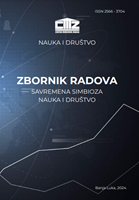Амерички интервенционизам и сукоб у Украјини
American interventionism and conflict in Ukraine
Author(s): Davor Strika
Subject(s): Political history, Social history, International relations/trade, Sociology of Politics, Russian Aggression against Ukraine, Russian war against Ukraine
Published by: CENTAR MODERNIH ZNANJA
Keywords: USA; Ukraine; Russia; foreign policy; international relations; American interventionism; hegemony;
Summary/Abstract: American foreign policy and its approach to the world, throughout its nearly two-and-a-half centuries of existence, can be divided into periods of isolation and intervention. The period of isolation spanned from the victory in the American War of Independence against the British Empire in 1783 until the Spanish-American War in 1898, considered a pivotal point in America's foreign relations and global approach. American involvement in two world wars, followed by its position as the sole superpower in a unipolar world after the Cold War triumph over the USSR in 1991, enabled the USA to pursue an interventionist foreign policy. This policy involved active military and diplomatic interventions worldwide, often directly employing military force in places such as the former Yugoslavia (B&H and Serbia), Afghanistan, Iraq, and indirectly through proxies, leading to "proxy" wars as seen in contemporary Ukraine. In Eastern Europe, we are currently witnessing the largest military conflict on the Old Continent since the end of World War II. Given its scale, involvement of parties, weaponry used, geopolitical interests, etc., we can confidently assert that this conflict is not merely a conflict between Ukraine and Russia, but rather between Russia and the West or Russia and the American concept of interventionism, i.e. the American hegemony in international relations.
Book: Savremena simbioza - nauka i društvo
- Page Range: 44-64
- Page Count: 21
- Publication Year: 2024
- Language: Bosnian, Croatian, Serbian
- Content File-PDF

